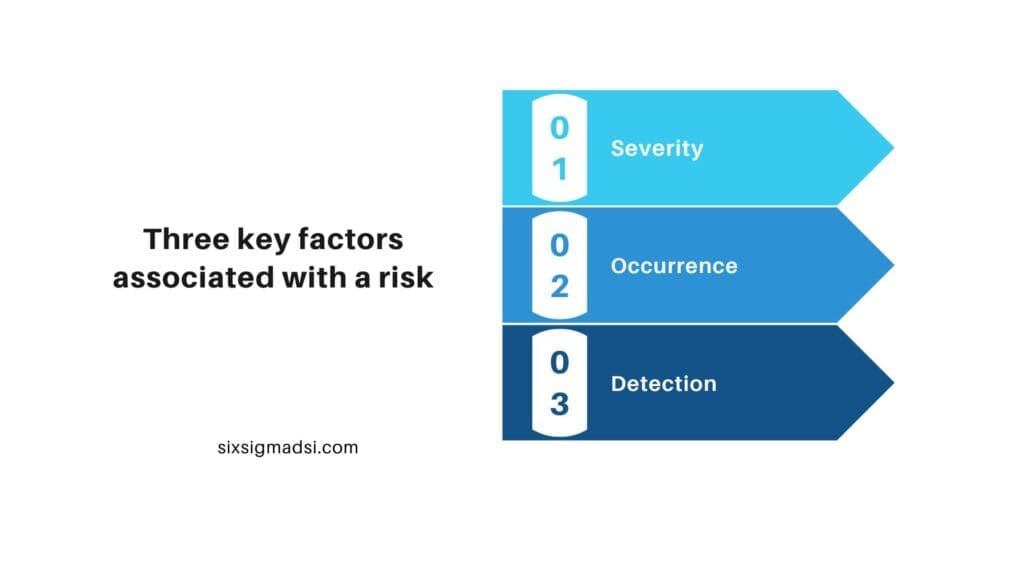Estimated reading time: 3 minutes
What is a Risk Priority Number?
The Risk Priority Number (RPN) is a numerical assessment tool commonly used in risk analysis and management, particularly within industries like manufacturing, engineering, and quality control. It helps in identifying, prioritizing, and addressing potential risks associated with a process or a product.
The RPN is calculated by multiplying three key factors associated with a risk:
- Severity: This factor assesses the potential impact or seriousness of the identified risk. It is usually rated on a scale from 1 to 10 (or another predetermined scale), with higher numbers indicating greater severity or impact if the risk were to occur.
- Occurrence: Occurrence refers to the likelihood or frequency of the risk event happening. Similar to severity, it is often rated on a scale from 1 to 10, where higher values represent a higher likelihood of occurrence.
- Detection: Detection signifies the probability of detecting or identifying the risk before it causes harm or becomes an issue. Like severity and occurrence, it’s also rated on a scale from 1 to 10, with higher ratings indicating a lower probability of detection.

Risk Priority Number Formula
The formula to calculate the RPN is simple:
RPN= Severity X Occurrence X DetectionRPN = Severity X Occurrence X Detection
The resulting RPN provides a numerical value that helps prioritize risks. Generally, the higher the RPN, the more critical the risk, indicating that it requires more immediate attention and mitigation efforts. Organizations can then focus their resources on addressing the high RPN risks to minimize their potential impact.
The RPN value isn’t just an indicator of risk; it also serves as a tool for decision-making. By breaking down risks into these components, teams can analyze where to focus their efforts—whether to reduce the severity, lower the occurrence likelihood, or improve detection methods—to effectively manage and mitigate risks within a system or process.
Goal
The primary goal of the Risk Priority Number (RPN) is to provide a systematic and structured approach to prioritize risks within a process, system, or product. This prioritization is crucial for effective risk management and mitigation strategies. The RPN helps in several ways:
- Prioritization: By assigning numerical values to severity, occurrence, and detection, the RPN allows risks to be ranked based on their potential impact, likelihood of occurrence, and detectability.
- Focus on High-Risk Areas: Risks with higher RPN values indicate areas that need immediate attention or where potential issues could have significant consequences.
- Decision-Making Support: RPN serves as a tool for decision-making in risk management. It aids in determining which risks to address first and how resources should be allocated to manage those risks effectively.
- Continuous Improvement: Regularly assessing RPN values allows for ongoing monitoring and evaluation of risk management strategies. It enables organizations to track changes in risk levels over time and identify areas where improvements have been successful, and areas that may require further attention.
- Communication and Transparency: RPN provides a quantitative measure that can be communicated across teams and stakeholders. It facilitates clear communication about risk severity.











